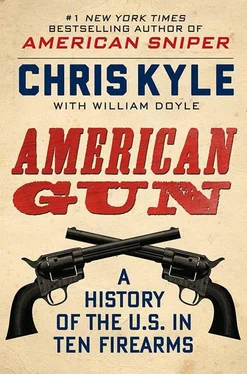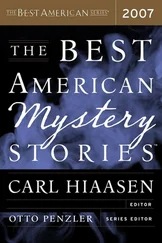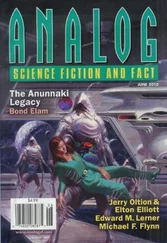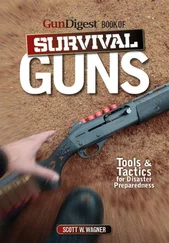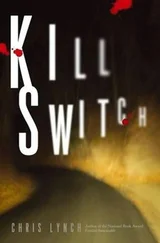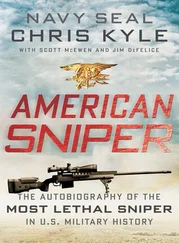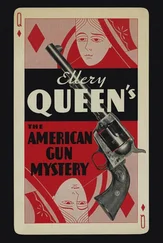But all this lay in the future back in 1942 near Dieppe, France.
As Zip Koons ran up the narrow path from the beach, he heard the muffled bang of a grenade exploding in a nearby house. Guided by some French spies, the commandos at the head of the team had run into a house where Germans were known to be sleeping. The Germans had tried to resist.
Most likely they wouldn’t have been taken prisoner anyway, not by the French.
Koons kept running. His team was assigned to destroy a German gun battery so the main assault to the north could proceed without interference. His job was to help secure the farm that bordered the woods near the artillery. There was a barn on the property, and the commandos were just getting to it when Koons ran up. Another American Ranger, Sergeant Alex Szima, was already there with his Thompson.
“Go to it, Yanks,” said the commandos.
Szima and Koons ducked in and started clearing the barn. It was empty, but in the dark they couldn’t take that for granted. Sweat poured off the corporal as he followed Szima across the floor and then up to the loft. The place was empty.
They found a wide hay door on the second story and opened it. There in the dim light across from them sat the battery, no more than a few hundred yards away. The first Nazis, woken by the gunfire, were just now running to their posts.
Szima said something Koons didn’t hear. He was too busy raising his rifle to his shoulder.
Across the way, the German reached his weapon and started getting it ready to fire. Koons pressed his trigger.
Bam!
The M1 jerked against his shoulder.
It felt good.
The man he’d aimed at was down. Another was running to take his place.
Bam. Koons fired again. Bam.
The M1 was as accurate as the Springfield at this distance. The recoil was easy to control. The sights, which he’d zeroed on the ranges back in Scotland, were steady and sturdy. But the real asset was the clip—eight bullets—and the fact that he didn’t have to move his hand to reload, unlike the bolt-action Springfield he’d come to Britain with. He just moved to the next target, or steadied his aim if he missed.
Bam. Again and again. Reload.
Commandos were swarming into the battery area.
Bam. Koons nailed a German who was raising a gun to shoot.
Bam, another German fell. Bam, bam, bam. Until there were no more targets.
The commandos secured the artillery emplacement and began disabling the guns. They had no way of knowing, but their small part of the mission was one of the few things that went right for the Allies that day. The raid on Dieppe got a lot of people killed, Canadians mostly, and a handful of Americans as well.
But it was an important baptism of fire for the Rangers. In their first combat action they proved that Americans could fight as equal partners with the premiere warfighters of their generation. The lessons they learned there were soon used in Africa and Sicily, then back in France itself.
It also showed they had one hell of a gun in the M1, better in fact than any other on the battlefield. Koons and his friend Szima were accused of being sharpshooters, but they claimed they were no such thing. “I was a bartender, before the war,” laughed Szima.
They figured out later that Corporal Franklin “Zip” Koons probably killed twenty Germans that day. But he simply shrugged. Koons told everyone he’d just been doing his bit. He smiled when the British pinned a Military Medal on his chest, making him one of the few foreigners to ever get the honor. He survived the war, and went home to Iowa, where he raised a family, worked as a banker, and lived the American dream without much of a fuss, just like millions of other members of the Greatest Generation.
Even before it was used in combat, the M1 Garand was recognized by America’s British allies as a powerful and important weapon. Koons and his fellow Rangers had demonstrated the gun not only for the commandos, but for the Queen, who knew enough about guns to be impressed by the type of clip it used. But even with the Queen as an admirer, the M1 remained an American gun. There were a few exceptions, but mostly the Brits stuck with bolt-action versions of the Lee-Enfield as their standard infantry rifle. They were fine weapons, but they weren’t Garands.
The British commandos wanted the Rangers’ M1s for themselves, and tried to do some horse trading on the side. But the Rangers weren’t buying. They knew what they had.
It wasn’t only foreign soldiers who lusted for the semi-automatics. When they hit the beaches at Guadalcanal in August 1942, most of the U.S. Marines were still armed with weapons of the previous war, the superb but increasingly outdated M1903 Springfield bolt-action rifles. The Marine brass figured they were getting great results with the 1903 Springfield, and they just weren’t so sure about the M1 Garands.
That thinking changed right quick. What rifleman worth his salt doesn’t want his gun to hold as many bullets as possible in a firefight? And to reload fast? On Guadalcanal, it was not unusual for the Americans to face lightning banzai charges by Japanese troops. Reloading a Springfield under normal circumstances was not difficult, but a guy charging at you with a bayonet is not normal. You needed a bullet ready at all times.
Lieutenant Colonel John George remembered a time when a Marine struggled to reload after firing. With an enemy soldier charging in, two nearby army soldiers simply “pointed their Garands, still holding more than half-magazine capacity, at [the enemy’s] chest. Then they pumped the triggers until both clips were ringingly ejected from their receivers. They lowered their aim to keep the stream of metal pouring through him as he fell to his knees, then his haunches, then on his face, clutching his rifle tightly to the last.”
That only had to happen once for certain Marines to decide they had to have the new guns—by any means necessary.
“We had to keep ours tied down with wire,” remembered Colonel George. “Leathernecks were appropriating all they could lay hands on by ‘moonlight requisition.’ In daylight, they would come over to our areas to barter souvenirs with the freshly landed doughboy units; any crooked supply sergeant who had an extra M1 rifle could get all the loot he wanted. When the Marines began to get a few Garands up to the front the demand proportionately increased. They quickly learned that the M1 did not jam any more often than the Springfield, and that it was equally easy to maintain.”
There’s a story told about a Marine corporal of the 2nd Marine Raider Battalion marching very tightly behind an Army sergeant leading an advance platoon during the campaign. The Army man asked the leatherneck what the deal was.
“You’ll probably get yours on the first burst, Mac,” answered the Marine, eying his companion’s M1 Garand. “Before you hit the ground I’ll throw this damn Springfield away and grab your rifle!”
If you were bound for combat, there was a lot to like about the M1 Garand. It had several more rounds than the Springfield. You could fire much faster than anything but a machine gun. It had less recoil than a bolt-action rifle. It had an excellent sighting system. You could drop it in salt water and sand with few ill effects. Fast-firing, fast-reloading, accurate, user-friendly, durable, and reliable—check, check, double-check. It was easy to disassemble, clean, and oil.
On the negative side, the “pinging” sound the weapon made when you fired your last round and the clip flew out let the enemy know you had to reload. If you didn’t push the operating rod back right or had something else miss its catch when you were loading, your thumb got slammed by the bolt, giving you the infamous “Garand thumb.” Otherwise, properly maintained and handled with reasonable sense, the weapon was effective and about as soldier-proof as it is possible to make a gun. Of course, once men had eight shots without having to reload, they wanted more. Can’t blame them for that.
Читать дальше
